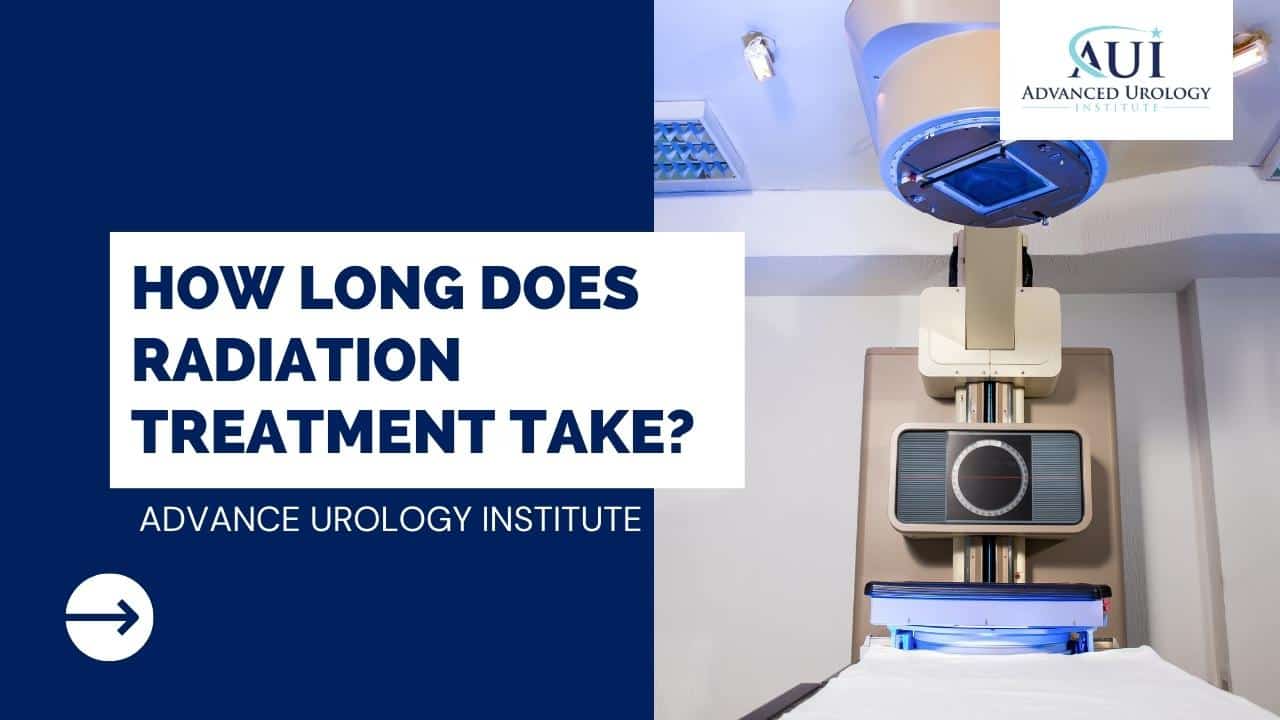Key takeaways
- Radiotherapy is a cancer treatment that uses high doses of radiation to destroy cancerous tumor cells. It can be administered externally or internally, and the length of treatment depends on the type, location, and characteristics of the tumor.
- External radiotherapy is typically given daily, from Monday to Friday, for five to eight weeks, with breaks on the weekends to allow healthy cells to recover. The length of treatment may vary depending on the specific tumor and the location.
- External radiotherapy is a painless process that typically takes 30-45 minutes, including set-up time, but the actual treatment only takes 2-5 minutes. The patient lies on a treatment table and is positioned under the radiation machine while special shields or blocks are used to protect healthy tissues.
 Radiation therapy delivers controlled, safe and effective doses of radiation to cancerous tumors. The tumor cells are exposed to high doses of radiation that destroy their genetic material and eventually damage or kill them. Hence the cancer can no longer grow, multiply or spread after the treatment. Though the radiation affects all the cells, healthy ones are able to recover fully from the effects of the treatment.
Radiation therapy delivers controlled, safe and effective doses of radiation to cancerous tumors. The tumor cells are exposed to high doses of radiation that destroy their genetic material and eventually damage or kill them. Hence the cancer can no longer grow, multiply or spread after the treatment. Though the radiation affects all the cells, healthy ones are able to recover fully from the effects of the treatment.
Radiotherapy is generally administered either externally or internally. During external radiation therapy—the most common form of the treatment—a machine is used to direct high-energy rays at the cancer. In contrast, internal radiotherapy (also called brachytherapy) uses a radioactive source that is temporarily or permanently implanted directly into the cancerous area.
So how long does the radiation therapy take?
The exact duration of the treatment depends on the type, characteristics, and location of the tumor. The length of treatment also depends on the dosage to be delivered, the number of fractions to be given, the treatment plan created by the radiation oncologist, and whether it is external or internal radiotherapy.
For example, if you have a deeper tumor, then you may require a more-focused beam delivered for a shorter period of time. But if you have a larger, shallow tumor, then you may need treatment for a longer period.
Equally, since the radiation must be given in a way that has minimal adverse effects on healthy cells, a shorter length of exposure is necessary if the tumor is located in more delicate organ (like the brain) or is in close proximity to very sensitive body tissues.
Your radiation oncologist will assess your tumor and make the necessary prescription. Then, by working with your radiation oncology team, the oncologist will determine how best to deliver the prescribed dosage, how many treatments are necessary, and how long it should take.
Next, your radiation oncologist will oversee the simulation of treatment to ensure that appropriate dose is given to the right location and that as little as possible reaches normal tissue. The simulation is followed by the testing of the delivery set-up to check the performance and positioning of the equipment to be used to give the treatment. After that, your treatment visits begin with the radiation therapist in charge of administering the daily fractions.
How long does external radiation therapy take?
External radiotherapy is typically delivered daily, from Monday through Friday, for five to eight weeks. Weekend breaks are factored into the treatment schedule to allow healthy cells to recover. Each treatment is offered on an outpatient basis.
But there are exceptions to this schedule. Some tumors may require treatment for less than five days per week and only need treatment for one to two weeks. Specifically, shorter durations of two or three weeks in length are commonly used in palliative care—the use of radiation to relieve cancer symptoms. Still other tumors, such as certain brain cancers, may require just a single treatment.
External radiation therapy is a painless process and is almost like having a regular x-ray. You’ll be in a room for 30-45 minutes because of the time it takes to set up equipment and place you in the correct position, but the actual treatment takes 2-5 minutes.
Once in the room, you’ll lie on the treatment table. You’ll then be positioned under the radiation machine. Your radiation therapist will place special shields or blocks between the machine and other parts of your body to protect normal tissues. Thereafter, you’re expected to remain still, though you don’t have to hold your breath.
After you’re in the correct position, your radiation therapist will move into a separate, nearby room to turn on the machine and begin the actual treatment. The therapist will watch you on a monitor and you’ll be able to communicate with the therapist through an intercom.
How long does internal radiation therapy take?
Brachytherapy uses radiation implanted inside the body to treat cancer. The radiation implant is placed as close as possible to the tumor in order to concentrate the radiation on the cancer cells and minimize radiation damage on normal tissue around the tumor. The radioactive material is sealed in a thin wire or hollow tube (catheter) and implanted directly into the cancer affected area on a temporary or permanent basis.
Internal radiation therapy is used when the oncologist decides that the best way to treat the tumor is to expose it to a higher radiation dose. The radioactive implant is closer to the cancerous cells and delivers a higher dose over a shorter period of time. The treatment is ideal for several types of cancers, including breast cancer, brain tumor, gynecological cancer (like ovarian and cervical cancer), lung cancer, and head and neck cancer.
The time taken for brachytherapy and whether it is done on an inpatient or outpatient basis depends on the type of therapy used and the nature of the cancer. In some cases, internal radiotherapy can be completed within three to five outpatient treatments of a few minutes each. But in other cases, the radioactive implant may be left in place for up to a week and there is need for a hospital stay during that period.
Finishing your radiation therapy sessions
It is important to finish all sessions of radiotherapy. And never to miss or delay treatments because this may reduce the effectiveness of the radiation in killing the tumor cells.
You should remember that your doctors are not just bothering you with making several hospital visits. There is need for different sessions because radiation is destructive and should not be delivered all at ago. In fact, if the recommended dosage was to be given once, it would pose a greater risk to healthy tissues and produce more adverse effects.
At Advanced Urology Institute, we spend the necessary time, effort and expertise to design a detailed treatment plan for radiation therapy. We offer the treatment in conjunction with other therapies and with the help of experienced oncologists and a multidisciplinary cancer care team.
We are also committed to reducing the time our patients take in treatment and often implement maximized aggressive treatments when necessary. Contact us today to learn whether radiotherapy is right for you and the various options available for you. For more information, visit the site “Advanced Urology Institute.”
References
- “What is Radiation Therapy?” Cancer.Net, American Society of Clinical Oncology, www.cancer.net/navigating-cancer-care/how-cancer-treated/radiation-therapy/what-radiation-therapy
- “External Beam Radiation Therapy.” American Cancer Society, www.cancer.org/treatment/treatments-and-side-effects/treatment-types/radiation/external-beam-radiation-therapy.html
- “Radiation Therapy.” CancerQuest, Winship Cancer Institute of Emory University, www.cancerquest.org/patients/treatments/radiation-therapy






